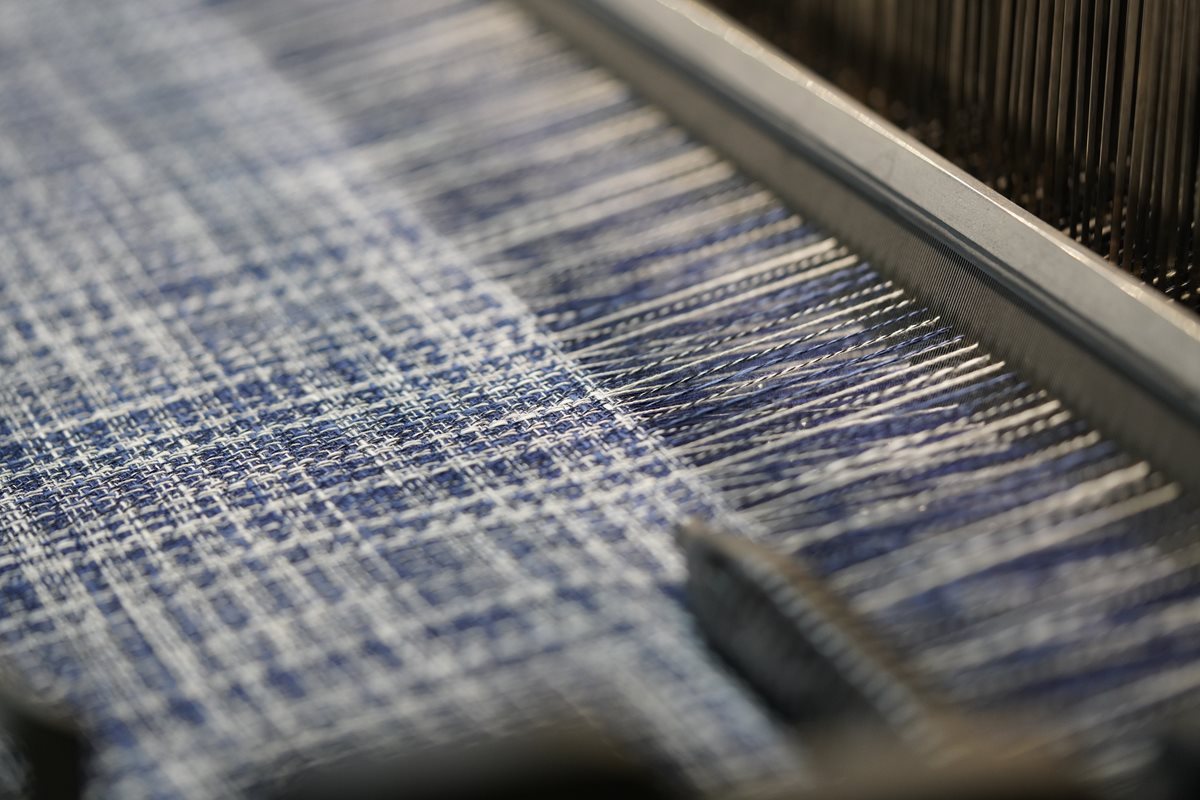Sustainability at Manteco
The art of time at the Prato-based company

If you want to talk about Manteco and the work it does, you have to talk about time. The art manifested in the company’s textiles is all centred on this basic concept. If you look at the fashion world superficially, you might be forgiven for thinking it is ephemeral and not much more than a succession of collections and seasons. And while a seasonless approach is gaining ground in the market, there is still a long way to go before we can say that this new philosophy is becoming daily practice. When it comes to textiles, the clock is inverted and a dense stratification of time allows us to glimpse that real ecological and responsible thinking can emerge.
The sustainability represented at Manteco is the brainchild of a philosophy that extrapolates material from the flow of time. The clock stops, time is used in a non-linear way and materials acquire new life.
This approach is clear to see as you walk around the wide-open spaces of the Prato-based company. Looking at the wool emerging from enormous bundles, you understand that a lot of experience has built up since those early days in the ’40s, when the founder collected second-hand military goods from all over Italy and began a recycling process to give them a new life. Every garment was shredded, returned to fibres and then spun, using only a mechanical, wet process and no chemicals at all. Decades later, using the same basic process, Manteco is now recognised as being the creator of sustainable luxury fashion products, thanks to a high level of innovation, smart and constant research, investments and textile solutions.
An essential tool for forging the company’s vision, time at Manteco is conceived as the product lifecycle, as the duration of production, as recovery and zero waste. Each of these concepts is a guiding principle in the company’s design process and becomes a way of looking at the product in an ethical, value-added way. The only way to ensure that sustainability is not just an empty or infeasible soundbite.
“When we create new items, the first thing we think about is their second life. Our fabrics must be not only beautiful and high-performing, but also recyclable and able to be put back into the circular manufacturing process. With the support of our constant research into innovative fibres, sustainable investments and know-how, we can make the best materials in the most ecological way, while always taking account of their biodegradability and impact.” If sustainability is a philosophy that moves forwards and backwards simultaneously, the Sustainable Design project manages to look in both directions.
But it is not enough to merely extend the lifecycle; quality must also be improved and obsolescence reduced. This is the task of the Durability Project which, as they explain to us, simulates the life of a fabric by testing durability and ageing, providing an objective duration and more understanding of where improvements can be made. Mainly used for recycled wool, the Durability Treatment enables the selection of the best possible raw materials, thorough quality control, and a zero-waste and zero-kilometre production system – all with a focus on total recyclability.
Time spent on waste prevention measures is the focus of the Zero-Waste project: a company department dealing solely with collecting waste and offcuts from the supply chain, from spinning to finishing.
The archaeology of fabric is reinvented, so instead of “waste” it becomes a springboard for a new beginning. In Project43 and Project53, past time re-emerges and turns into an object again, redefining its condition of being just a “thing” that decays, deteriorates, or is “no use anymore”. The first project, based on the principles of the circular economy, aims to optimise existing materials, recovering offcuts from the garment-makers that use Manteco fabrics and regenerating them into new luxury fabrics. The second pushes the concept of circularity and responsible practice even further, aiming to optimise and cut to zero the garment-making waste of any manufacturer, not just Manteco.
Stopping and manipulating time has something alchemic about it, especially when it comes to colours. The Recype® project explores the art of creating wool dyes without colourants or chemicals. Dyeing is not involved in the wool recycling process because pre- and post-consumer garments are already dyed. In the Recype® process, the craftspeople at Manteco’s raw materials department come up with new wool colours by simply mixing different fibres and shades, developing dye-free colour recipes which are then saved and reused over time.
Ecology is teamed with fashion and the results enable an exploration of the transformable structure of the raw material, its mobility and durability (the company’s spectacular, vast archive is concrete proof of that). Thinking about textiles in these terms means recognising that time is not just an internal phenomenon but also an external one; that every time a product is made, its past and future must also be taken into account.
This is why Manteco has looked at the network around it and launched MSystem, a unique ‘community’ of over 50 craft experts and textile companies involved in creating Manteco fabrics, both upstream and downstream. In line with the commitments of the official Supply Chain Charter, the company has set out its objectives and high standards in terms of environmental, social and organisational accountability.
At this point in time and history, materials are no longer just a transition towards the glories of fashion. They can trigger change, guide the design process, and create new ecological landscapes.










